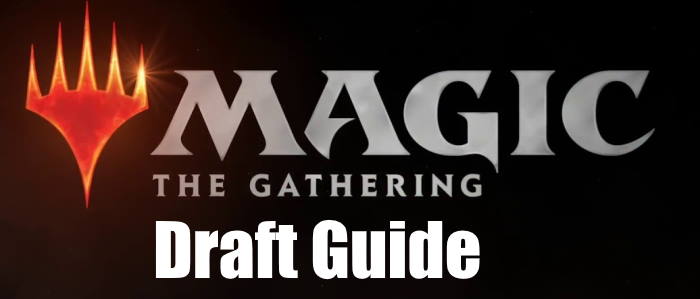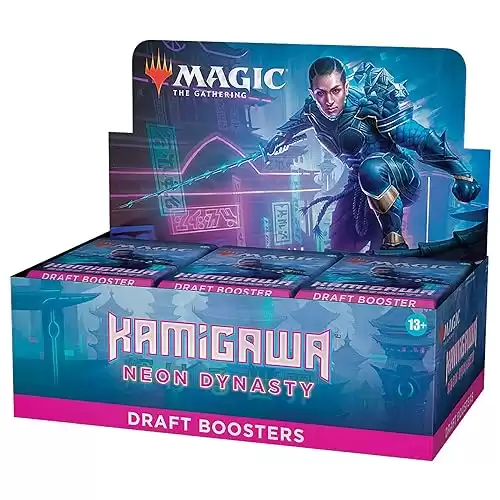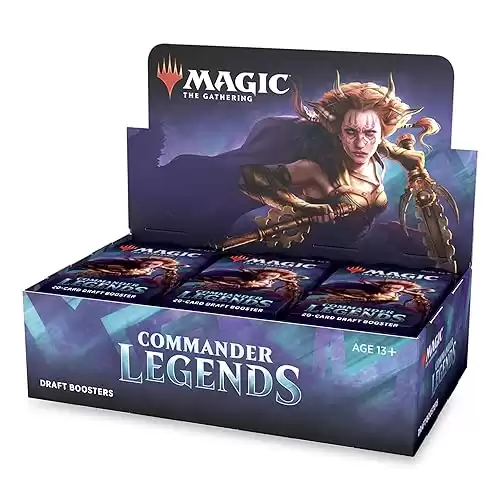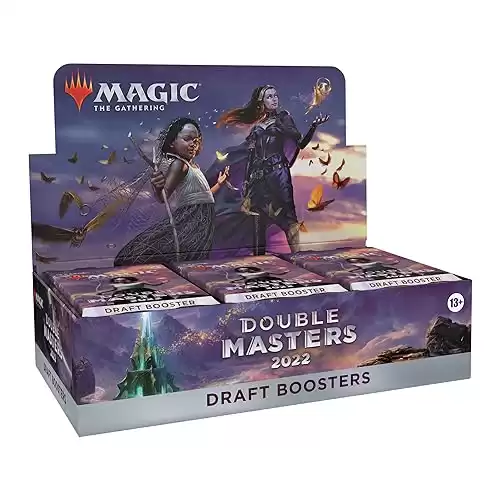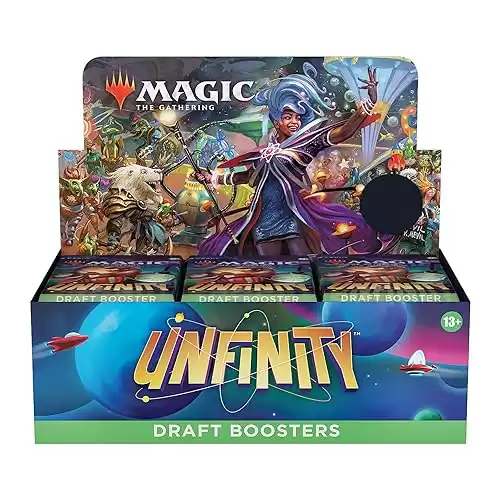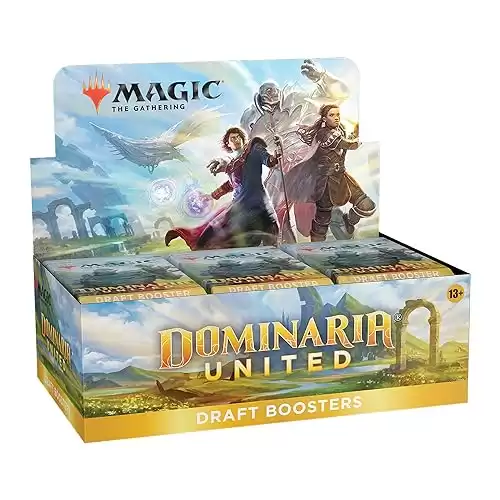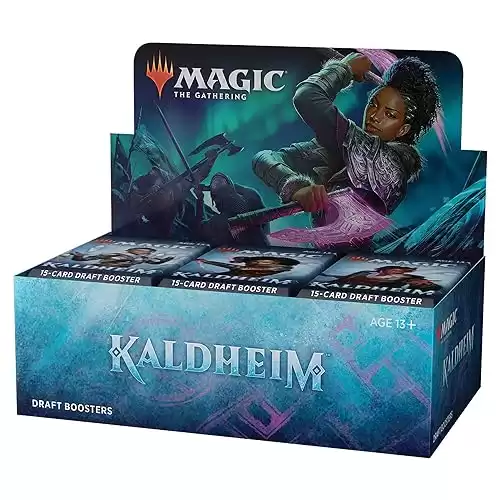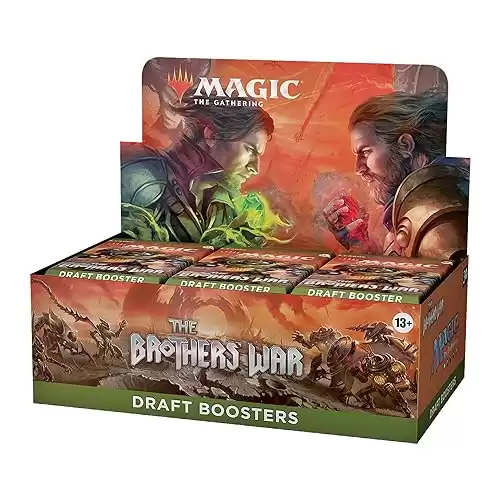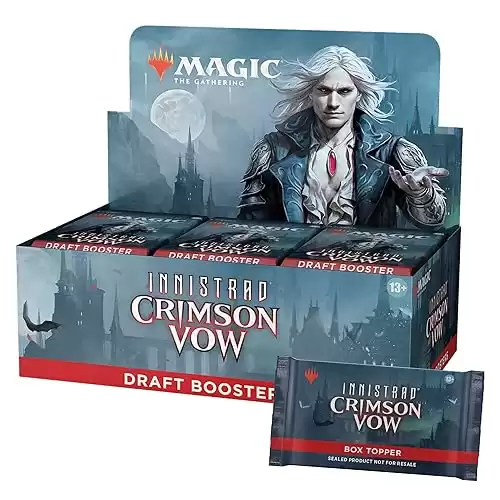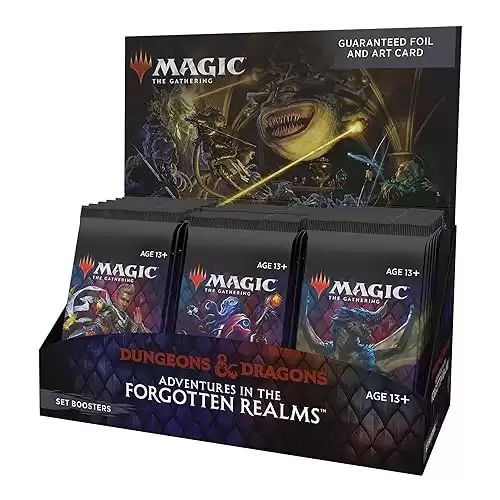For the past few years, many Magic players have praised WOTC for how consistently good their limited formats have been. The growth of MTG Arena has also made it easier than ever to draft the latest set. Whether you’re looking to do your first draft or climb the ladder, you might be wondering how you can improve in one of Magic’s most challenging yet rewarding formats.
Draft requires skills that separate it from every other MTG format. Sure, there may be other ways to play limited, but draft is still a unique experience. The main reason for this is that the process of drafting is a skill that you can develop. Evaluating cards, predicting what your opponents are playing, and constructing a deck piece by piece are difficult skills to learn and master. Still, by practicing each skill and learning from your mistakes, you can work your way through even the most challenging drafts.
If you’re not sure what you need to practice, or have a hard time understanding how to succeed in drafts, you’re in luck! The rest of this article will not only break down what drafting is, but also common areas that players struggle to learn.
Table Of Contents:
- What Is a Draft in MTG?
- How Do I Improve at Drafting?
- How Much Mana Should a 40 Card Deck Have?
- End Step
What Is a Draft in MTG?
If you’ve never heard of drafting before, don’t worry! It’s actually a fairly simple process. Draft is a format in which players build new decks on the spot with booster packs. Once you have your deck, you’ll play 1v1 against others who have done the same thing. Curious to learn more? Let’s take a look at exactly how a draft works.
How Do You Play Draft in MTG?
First, make sure you have enough players to draft. Ideally, there should be eight players, but any number from six to ten will work. Everyone will sit around a table with three draft booster packs each. Usually, the packs should be from the same set. Some events called Chaos Drafts, however, allow any booster packs for a more random, silly experience.
RELATED: Set Boosters vs Draft Boosters FAQ
Once everyone is ready, open your first booster pack and remove the token. Look at the remaining 15 cards and place one of them face-down in front of you. After making your pick, pass the rest of the cards to the player on your left. You’ll receive another pack from the player on your right, this time with fourteen cards. Take another card and pass the rest to your left. Repeat this process until no cards remain.
After finishing each pack, you’ll have some time to review your picks. At casual tables, you may be allowed to look at your picks whenever you like, so just ask beforehand!
When everyone is done reviewing, open your second pack and pick another card. You’ll continue to pick and pass just like you did for the first pack, but this time you’ll pass to your right. Once you move on to pack three, you’ll pass to the left again. This means you’ll pass left, then right, then left, and end the draft with 45 cards.
Next, you’ll build a deck of at least 40 cards from what you’ve drafted, using about 23 spells. You also get to use as many basic lands as you want, which the store or player hosting the draft should have. Then, you and an opponent will face off with your new decks!
What Is Good Draft Etiquette in MTG?
During the draft, you and the other players can do a few things to make the process as easy as possible. These aren’t required, but they’re best practices that I highly recommend following.
The most important by far is “Zone Drafting”. You can imagine four zones on your space at the table: Your left, your right, the center, and what’s in your hands. You shouldn’t ever have two different groups of cards in the same zone at the same time. Mixing up cards can lead to players not having the right amount of cards, which isn’t fair to your fellow players.
So what should be in each zone? In the center of your space, keep the cards you’ve already picked. These should be in a single pile, not in lots of little piles that you have pre-sorted. In your hands, you should have the current pack that you’re drafting from. If you’re allowed to look at your previous picks during the draft, make sure you set the current pack down first.
To your left and right will be the packs that you’ve passed and the packs being passed to you. Again, there should only be one pack in either zone at any time. Don’t stack packs, no matter how you position them to tell the two apart. Keep “Zone Drafting” in mind, and everyone should get the right number of cards!
Lastly, just remember to be respectful. If someone takes a very long time to make a pick, for example, don’t be rude. If they do it over and over, you can kindly ask them to speed up. Everyone should have a good time playing the game.
What Is The Difference Between Draft and Sealed in MTG?
Draft and Sealed are both ways to play limited MTG. Limited means that you’re building a deck from booster packs rather than preparing one beforehand. Although these formats are similar, they’re certainly different experiences.
In Sealed, each player gets six booster packs to open and construct a deck from. Not only is this process much simpler than draft, it’s also more random. You have much less agency in Sealed than you do in Draft, but some players may prefer that. In Sealed, you get to open more packs, and you also don’t have to have a certain number of players. Different players will prefer different formats, so you should play how you want to!
Can You Draft MTG with Two Players?
While most drafts need around eight people, there are lots ways to draft with just two players! There are too many variants to go over in detail, but they each have their own unique spin on the decision making of Draft. Ryan Archer has a great article discussing three of his favorite two-player draft formats, and you can check that out here.
How Do I Improve at Drafting?
Now that we’ve gone over how to draft in MTG, you might be wondering how to draft well. There’s a lot to keep in mind when sitting down to draft, so let’s go over what you can do to improve your odds of winning.
Study the Set
Preparing to draft before you even sit down is really key to success. You don’t have to memorize every card, but glancing through all the cards in a set should give you at least some idea of what strategies are available.
For example, if you looked through the Card Image Gallery for Kamigawa: Neon Dynasty, you would see that there are lots of artifacts and enchantments. There are also plenty of cards that reference these two types. This means you should likely value artifacts and enchantments more than you would in most sets.
The more you study a set, the quicker you’ll be at drafting, too. You won’t have to read every card in a pack, or debate as long about which card you should take. In fact, you’ll be better at identifying strong cards if you know what else exists in the set.
Card Evaluation
This is one of the trickiest skills in both Draft and MTG as a whole. Even the top players can disagree on how strong a card is, or be significantly wrong about a card early into a new format. We could likely do a whole article on card evaluation, so I’ll just go over some of the basics for limited.
First, removal should be one of your top priorities. There are plenty of efficient options nowadays, and you’ll want to take them highly. In just about every game, you’ll need to deal with your opponent’s threats, so these will almost never be dead cards.
You’ll also want to avoid cards that are too narrow. Unmoored Ego might have a place in Constructed, for example, but it’s unplayable in Draft. If you have to develop a convoluted scenario to make the card work, it’s not worth taking.
Lastly, remember that WOTC doesn’t print many unplayable cards anymore. You might see multiple cards in the same pack that you want. Try to determine which one would fit best, but don’t spend all your energy on one pick. If you really can’t decide, take the card with the lower mana value. If you have too many expensive cards, you risk drawing them in the early game and having nothing to do.
As you play more, try to identify which cards really affected the game, and why. If your opponent want to chat, ask them which cards they thought were key during the match. You shouldn’t completely change your evaluations every time a new card does well, but think about your experiences over a long period of time. Be willing to change your mind about a card if you see it perform differently than you expected.
Staying Open
Staying open is one of the best things you can do during a draft. While it can refer to what actions you take during a draft, staying open also involves having the right mindset during the first few picks.
All that I mean by staying open is not locking yourself into any color or strategy too soon. Let’s say, for example, that you first pick a green card that you’re very excited about. In the next packs, you take other green cards to go with it.
By the fourth or fifth pick, however, there are no more good green cards in the pack. If you keep taking green cards, you’ll be setting yourself up to have a mediocre or even bad deck because you forced yourself to play green.
Instead of locking yourself into a color prematurely, it’s much better to stay open and see what gets passed to you. In our previous example, let’s say you still took that green card in your first pack. In your next pack, don’t force yourself to take another green card. Instead, look at the best cards, just like you did for your last pick. If there’s a really strong option in green, great! If there isn’t, it’s ok to take a card in another color and just see what gets passed to you.
There’s no exact science to staying open, and of course your previous picks will have some influence on what you take. If you open one of the best cards in the set, you’ll likely try your best to play its colors. Just don’t force yourself to stick to something that isn’t working.
Reading Signals
Going hand in hand with staying open is reading signals. It may not seem like it, but you get lots of information during a draft that can help you make the right decisions.
Remember our previous example. If you notice that there aren’t many green cards left in a pack, you’re reading a signal. In this case, someone on your right is likely taking green cards, and therefore “cutting” you on green. It’s a bad idea to stick to green in this case because someone else will take all the good stuff before it gets to you.
Let’s assume in that same pack, however, are multiple red cards. Maybe there’s even a removal spell or a strong uncommon. That’s another signal: red is “open”, and you’ll likely get hooked up if you start taking red cards. This is why staying open is so important. If you can figure out what your opponents aren’t playing, you can commit to those colors and make a really strong deck.
Of course, you can’t read the signals in one pack and then call it quits. Maybe that pack just had a ton of red cards, and the rest are more standard. You need to look at the signals for each pack and try to figure out any patterns.
Also, don’t worry too much about what signals you send to your left. You don’t have any control over what they’re drafting, even if you think you’re cutting a color very well. Just take the best card for your deck.
Draft a Deck, Not a Pile of Cards
You’ll notice that I didn’t end that last section with “take the best card”. You need to take the best card for your deck. Once you’ve committed to a certain strategy, you need to take pieces that will contribute the most to your gameplan. After all, you have to build a cohesive deck after the draft, and all your pieces need to work together.
When you get a chance to review your picks, look at what you’re deck is missing. Maybe you have lots of expensive haymakers, but no cheap creatures to help get you to the late game. In the next pack, you should prioritize two-drops because that’s what your deck really needs. Even if a six-drop comes by that’s better, the two-drop fills a hole in your deck.
You might also try to build around specific synergies. If you have a Weaver of Harmony, your evaluation of enchantment creatures should be higher than it otherwise would be. Even if another card is better in a vacuum, an enchantment creature could be more powerful when combined with your other cards.
How Much Mana Should a 40 Card Deck Have?
Lastly, players often wonder how many mana sources they should have for a limited deck. Typically, you’ll want to play 17 lands with 23 spells, but this isn’t always the case.
If your deck has lots of cheap creatures, you could play 16 lands. If you want to stall the game and play big, expensive cards, you could go up to 18. I wouldn’t recommend going higher or lower than that in most circumstances. In extreme situations, it could be correct to run more or less lands, but tread cautiously.
Having sources of ramp doesn’t really change these numbers much. After all, you need to get enough lands to play your ramp cards in the first place. If you truly have a lot of ramp, you could consider cutting a land. Don’t sacrifice your mana base just to avoid cutting another card, though.
End Step
Not only have we gone over exactly what a draft is, but also some of the most important concepts to remember when you sit down to play. I hope you’re feeling more confident about Draft, as it’s definitely one of the most difficult but enjoyable formats in MTG.
Personally, there’s no format I love more than Draft. Every deck is unique, and you get to explore tons of new strategies with every set. If you’ve never drafted before, or feel intimidated about all the choices you’ll have to make, I encourage you to try it out. Sit down, have some fun, and experience one of the best ways to play MTG.
